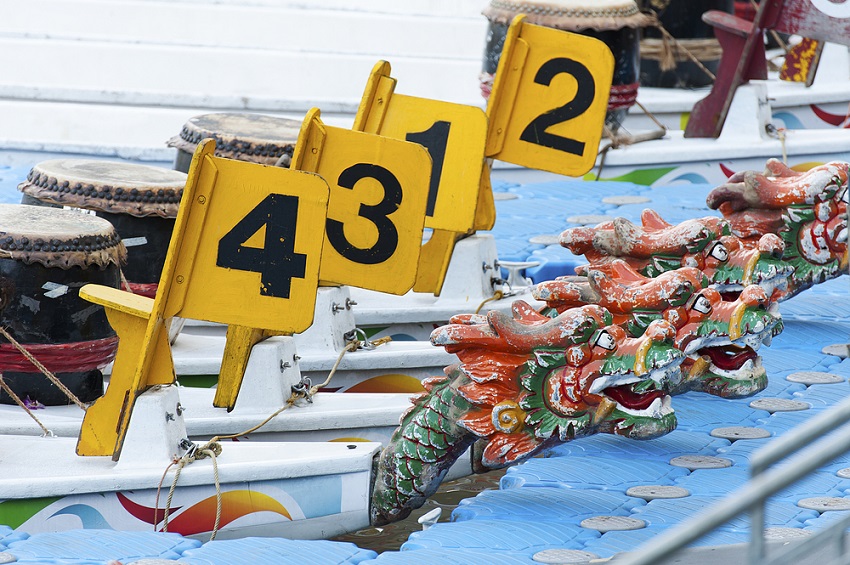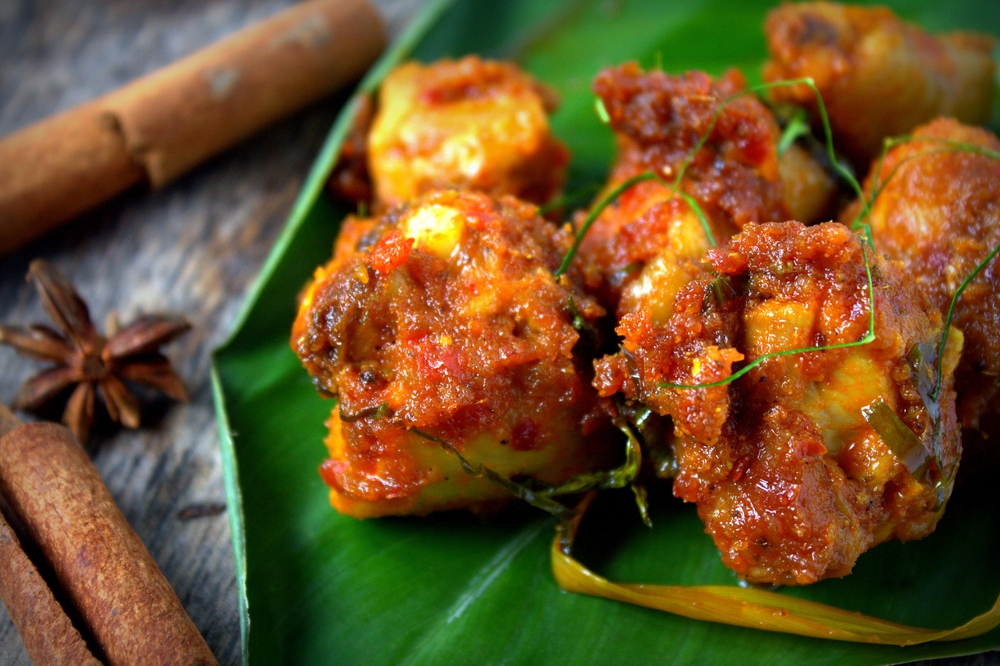Singapore - ritual and festival
Singapore is nurturing diverse traditions and ceremonies reflecting various kinds of beliefs and faiths of the ethnic groups living there. The land is famous for its multiculturalism.
Multiculturalism is a newly coined term with two resembling meaning terms of cultural pluralism and multiculturalism. These two convey a broad meaning of cultural diversity acceptance in which it can co-exist in one way or another. (ศาสตราจารย์ ดร. อานันท์ กาญจพันธุ์, 2555, หน้า 1)
- The Chinese Ethnic Group
1.1 Chinese New Year
Chinese New Year is one of the biggest, longest and liveliest festivals. It begins on the 8th night of the 12th lunar month of Chinese calendar to the 15th of the coming first lunar month. (โจวเซี่ยวเทียน เขียน ถาวรสิกขโกศล แปล, 2555) The Chinese-Singaporean give so much importance to the Chinese new year just like other Chinese around the world. The festival begins in January or February and it even lasts for 15 days in Singapore. People clean their houses to welcome the new year and put on their best-dresses. They also practice ancestor venerations, give Hong Bao to their children, have a big meal with their families and burn paper-made money and utilities for the dead as they believe their ancestors would use those in afterlife.
On every street especially the Chinatown community, the joyous celebration takes place. The Lion Dance procession and lighting firecrackers are on the scene. A big parade including the Chinese opera and a drum procession will be arranged on the first Sunday after the Chinese New Year. (วิทย์ บัณฑิตกุล, 2555, หน้า 166)
1.2 Festival of Hungry Ghosts
This festival is usually held in the 7th month (around August or September) as it is meant to welcome the spirits visiting the earth during this time of the year. Food offerings with burning incense and paper-made money call the spirits to take these meritorious deeds. The Chinese operas will be on a show after the food offering rituals. The Singaporean-Chinese later have meals together as it is believed to be blessings for them. (วิทย์ บัณฑิตกุล, 2555, หน้า 171)
1.3 Mooncake Festival
The festival is held to remember the historic event in which the Mongolian dynasty was overthrown in the 14th century on the 15th night of the 8th lunar month (around October).
The celebration takes place at night in Chinese Garden at Jurong Brid Park. The mooncakes once used by the revolutionaries at that time are meant to worship the moon. The place is decorated with bright lights as though these are the lights evoking the people’s spirit to fight back and start the revolution.
1.4 Vesak Day
It usually takes place in May on the 15th night of the 6th lunar month which is crucial to all Buddhists. It marks the date when the three Buddhist historic events happened on the same day but different years. The Buddha had been born, became enlightened and reached nirvana. In the morning, praying and sermon listening is practiced while releasing the caged birds and fish and walking around the temple with candle lights in palms are rituals believed to wash away sins one ever committed. In addition, it is to pay respect to the Buddha. (วิภาวรรณ พงศ์ทรางกู แปล, 2539, หน้า 101)
1.5 Dragon Boat Festival
The Dragon Boat Festival takes place in June. It is a big boat racing event of Singapore being held at Victoria Bay. The oarsmen from around the world join the festival. Apart from the race, there is a ritual in which Zongzi or sticky rice dumplings are thrown out to the sea to remember the integrity of a Chinese nobleman named Qu Yuan.
According to the Chinese chronicles, Qu Yuan had taken a dive and drowned himself because he wished to protest the corruptions in the court. His body was never found. The fishermen were trying their best to find it but it was all in vain. The people, thus, decided to throw the sticky rice dumplings to the sea in hopes these would distract marine creatures from eating his body. However, the body disappeared. (วิทย์ บัณฑิตกุล, 2555, หน้า 169)
2. The Malay Ethnic Group
2.1 Hari Raya Puasa
The Hari Raya Puasa marks the end of Ramadan in the 10th month of the Islamic calendar. The moon appears so clearly on the Hari Raya Puasa day according to the Islamic principle.
The Muslim people go to Mosque for a worship of the Allah’s kindness and later visit their relatives. It is a special moment when they have a chance to offer apologies to their relatives for what they have done wrong in the past. Family members will join the family feast as the traditional food, Rendang, is served.
On the next day, the Muslims visit Kubur or the Islamic cemetery where their relatives are buried. They will make a charitable donation called Zakat for poor people.
Zakat is an annual donation of the Muslims. It is an excessive amount of money the Muslims need to pay each year. Those entitled to receive according to Al-Quran are these 8 groups of people: the poor, those short of money, those inclined to Islam, those managing to collect and pay Zakat, those redeemed from being a slave, those in exile and spending it on the Allah’s will (i.e. a journey to Hajj in Mecca). If any Muslim who owns excessive amounts of money, assets or goods left from last year are not willing to make charitable donations, then he/she is clearly against Islamic laws. (วิทย์ บัณฑิตกุล, 2555, หน้า 175)
3. The Indian Ethnic Group
3.1 Thaipusam (Hindu)
It is a tradition of the Hindu believing in Muraga, God of bravery, power and goodness. The Thaipusam is held in early morning at Sri Srinivasa Perumal Temple on Seranguru Street. The Indians both men and women dress in yellow and line up for a parade around the town. The festive atmosphere is similar to the vegetarian festival in Phuket where the mediums walking along in the parade perform miracles and hurt themselves with sharp weapons amid the praying sound. (วิทย์ บัณฑิตกุล, 2555, หน้า 167)
3.2 Navarathi (Hindu)
Navarathi is held twice a year. The first Navarathi is held during the new year (from the first night to the 9th night of the fifth lunar month) while the second Navarathi is held during the mid-year (from the first night to the 9th night of the ninth lunar month) called Shardiya Navarathi. It is the old belief of the Indians that summer and winter makes up one year. Changes in seasons affect both physical and mental parts of human beings; therefore, the god worshipping ritual is practiced. (วิชญดา ทองแดง, 2551, หน้า 60)
The Hindu people cherish this tradition as they worship these wives of the trinity on whom they have long put an enormous faith. The goddess wives are Saraswati, the goddess wife of Brahman, Uma Devi, the goddess wife of Shiva and Lakshmi, the goddess wife of Vishnu. The celebrations take place at different Hindu temples around Singapore for nine nights as the name of this festival, Navarathi, tells. (วิทย์ บัณฑิตกุล, 2555, หน้า 172)
3.3 Deemittee Festival (Tamil)
In October, the Tamil in Singapore organize the Deemittee Festival at Sri Mariamman Temple on South Bridge Road to worship Terapadi, a heroine in South Indian legends.
Terapadi is a daughter of King Tarubhat and a sister of Dhrstadyumna. She was born out of a bonfire that the hermit had started his ritual. As she grew up, she becomes a wife of the five Pandop brothers. However, Terapadi is considered a cause of war at Kurukshetra as she was sexually assaulted by Tuhasasan. The incident angered the Pandop brothers, so they declared war that tells a story of Mahabharat.
The fire ritual is featured in the festival. The ritual performers believing in the goddess’ power do not feel the heat at all when they are walking on fire. (วิทย์ บัณฑิตกุล, 2555, หน้า 172-173)
3.4 Deepavali
On the 15th waning moon night of Karti month (October - November), the Little India neighborhood is lit up with celebration lights of this Hindu festival. It is not only the Indians’ new year but also a worshipping day dedicated to Lakshmi Devi.
‘Deepavali’ is a compound word in which Deep means fire balls and Avali means a row or a line. Therefore, Deepavali means a row of lanterns.
On this day, the Hindus worship Lakshmi Devi with lantern lights. They keep the lantern fire burning all day and night while chanting mantra and sloka including calling the 108 names of Lakshmi Devi as the act of praising and asking for blessings from Lakshmi Devi.
The Festival takes 5 days and the most important day is the last day or Deepavali. It is the day when the merchants and businessmen believe it is a new beginning to start a business or open a new account. On this special day, everybody forgets about their resentments and is nice to each other. The festive lights on the streets paint the town as though it was a paradise full of visitors. (วิทย์ บัณฑิตกุล, 2555, หน้า 173-174)
Bibliography
โจวเซี่ยวเทียน เขียน ถาวรสิกขโกศล แปล. (2555). เปิดตำนานเทศกาลจีน. กรุงเทพฯ: มติชน.
วิชญดา ทองแดง. (2551, ตุลาคม). นวราตรี-ทุรคาบูชา ณ วัดวิษณุ. วารสารเมืองโบราณ, 34(4), 60-75.
วิทย์ บัณฑิตกุล. (2555). สาธารณรัฐสิงคโปร์. กรุงเทพฯ: สถาพรบุ๊ค จำกัด.
วิภาวรรณ พงศ์ทรางกู แปล. (2539). สิงคโปร์. กรุงเทพฯ: หน้าต่างสู่โลกกว้าง.
ศาสตราจารย์ ดร. อานันท์ กาญจพันธุ์. (2555). รัฐชาติ และ ชาติพันธุ์. เชียงใหม่: สำนักกิจการชาติพันธุ์ กระทรวงการพัฒนาสังคมและความมั่นคงของมนุษย์.





